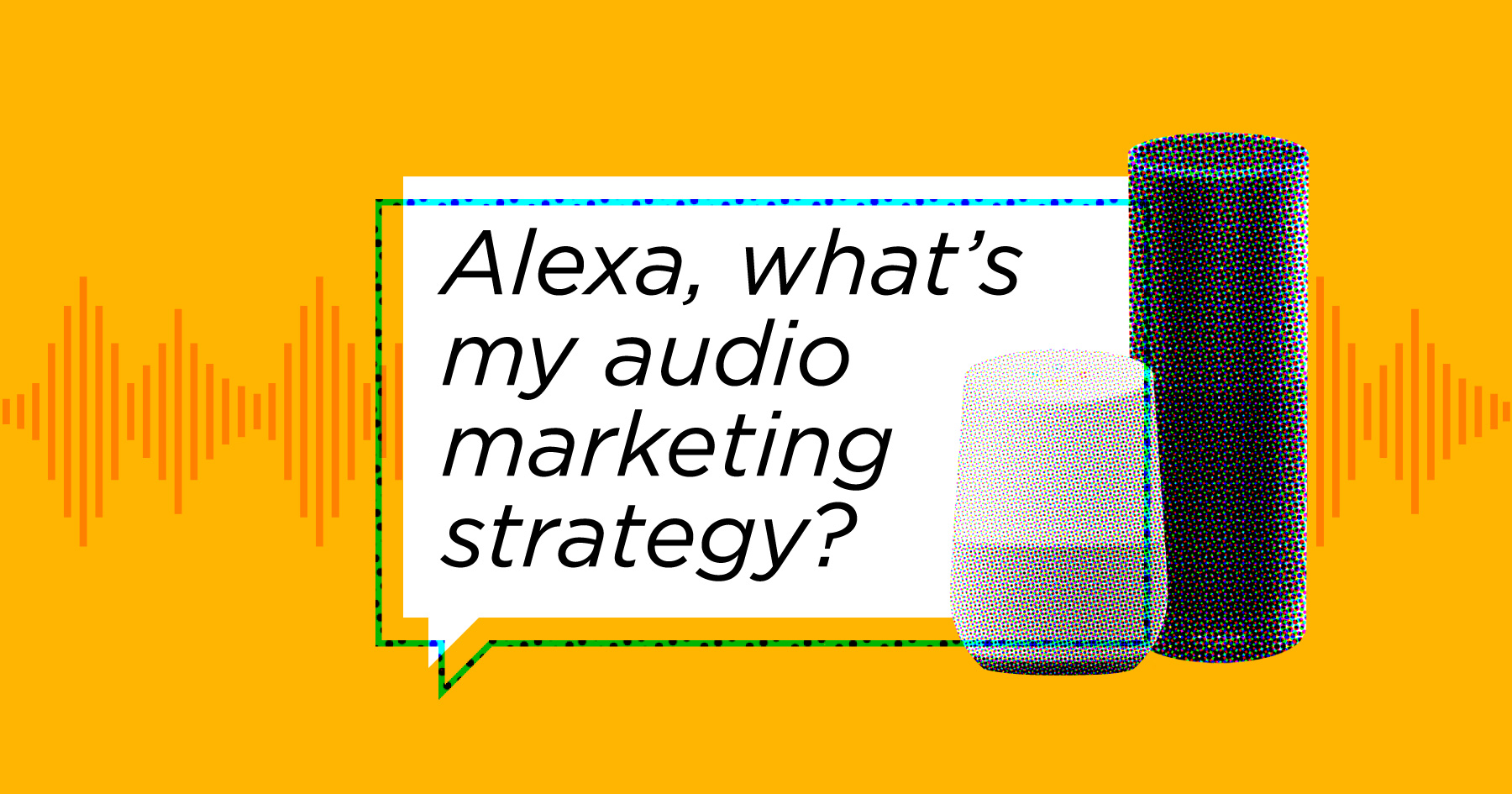Video may have killed the radio star, but audio’s making a rally. From podcasts to voice-activated virtual assistants, here are 4 digital audio strategies that should be considered in your marketing plan.
1. Podcast advertising
Podcast advertising has proven valuable for a range of companies, from those with a B2B focus like SquareSpace or ZipRecruiter, to consumer brands like Parachute and Dollar Shave Club. Perhaps most iconically, MailChimp crossed over from challenger email marketing platform to know-your-meme fodder with its famous “Mail Kimp” ad on Serial. Because iTunes is notoriously light on audience demographic data, these ads are largely guess-and-check in terms of reaching your target audience. As a result, brands that advertise via podcasts almost universally have an ecommerce model and include dedicated promo codes for each show they sponsor, allowing them to effectively evaluate ROI. Just don’t ask me about my Tommy Johns, that’s personal.
2. Podcast segments
Beyond traditional voice ads, some podcasts offer either sponsorship opportunities in the form of old-school product placement, or new-school digital influencer relations (think Jake and Amir visiting New Zealand with Air New Zealand). These segments do need to meet FTC compliance rules, including disclosure, but can still be positioned as a more authentic endorsement and have more time than a voice ad to delve into the value of a product or service. In some cases, discussion around specific organizations or companies is entirely earned and can have noticeable impacts. For instance, Run for Something’s segment on Pod Save America filled the company’s volunteer pipeline for months.
3. Alexa apps
Remember when iPhone first introduced apps, and everyone with a website ran out to make their own “app,” which was really just a mini-version of said site that lived permanently on your phone? And then we all realized that apps without a social, location-based or mobile-specific feature didn’t really get used. Are all of the millennials staring at me blankly? Do I have to explain what a flip phone is? Is this the moment—am I old? Anyway, it happened, and hopefully we’re all smarter this time around as we consider the skills and integrations that work best on voice platforms like Alexa and Google Home. So far, smart home and media products have thrived (I enjoy waking up to The Daily Show every morning) and opportunities for product fulfillment are beginning to find their footing, whether it’s calling an Uber or ordering a pizza. Although I’m not sure I’m down with Alexa’s new camera to help me shop for clothes… We’ll see.
4. Owned podcasts
What’s a blog you can read on the treadmill? An owned podcast. And if you’re undertaking content marketing and your target audience is made up of busy executives, voice may very well be the best platform for you. Company podcasts can highlight current content pieces like white papers, feature thought leaders from across your company’s executive team, and provide an opportunity to connect with experts and clients as guests. Podcasts can also be leveraged to land your own invitations to appear on a complementary pod, and can even lead to in-person speaking opportunities. And similar to the old RSS feed, subscribers automatically download new episodes, eliminating the need to continually remind your audience to check out your latest piece. The Morgan Stanley Ideas podcast is a great example…that I found through an advertisement courtesy of Alexa. Now that’s meta.
No matter what, all of the central rules of good digital strategy apply: your content has to be genuinely engaging and it must appear on platforms or shows where your key target audience is engaged and open to your message. Need help with your audio marketing strategy? We’re better company than Alexa and just an email away – [email protected]


